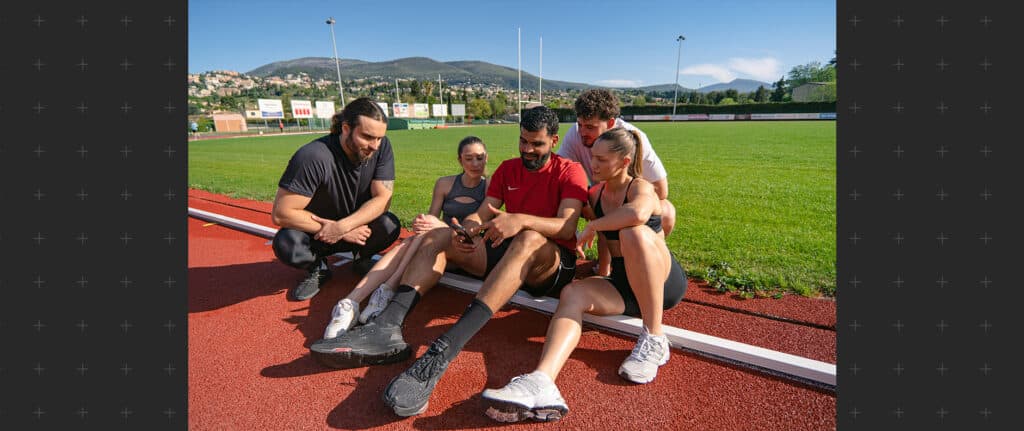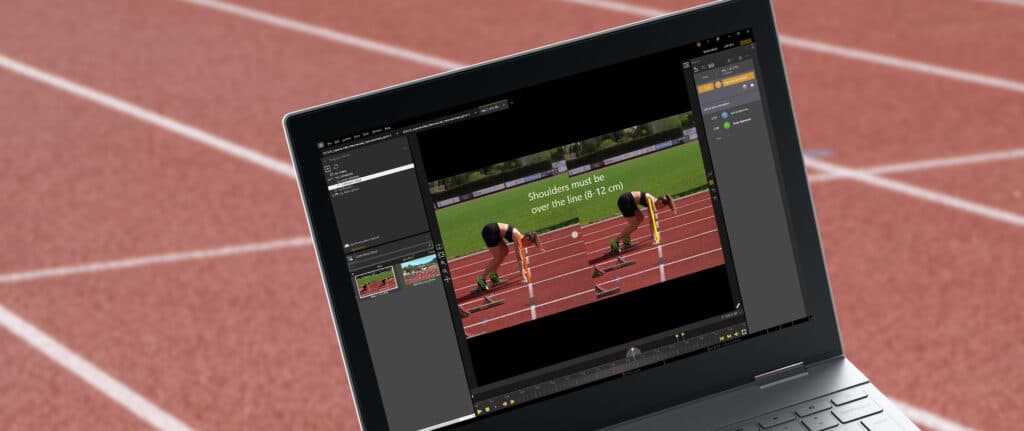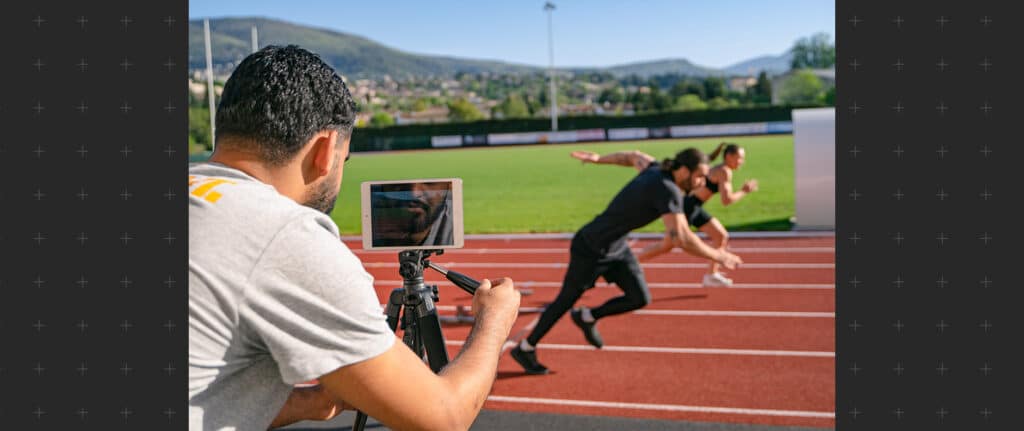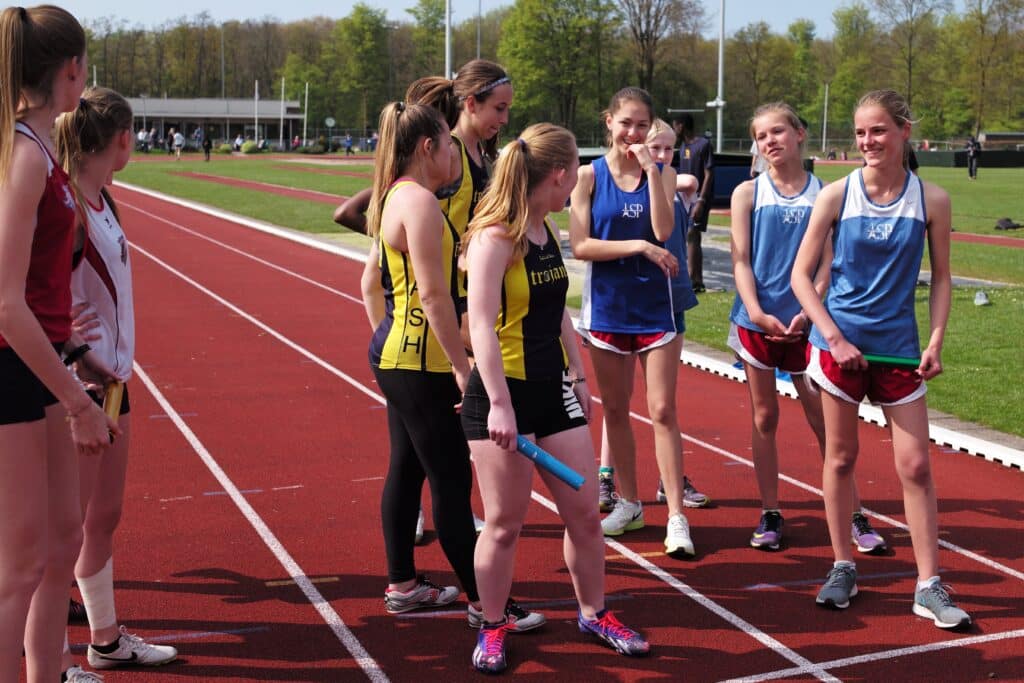With the myDartfish Express: Coach app, you can quickly analyze a few indicators on your phone or tablet. The app is handy to give athletes immediate feedback on their performance during training sessions. Slow-motion, zoom, or frame-by-frame replay allows us to see the athlete’s movement in detail. This is very useful for giving immediate feedback to our athlete, right after a performance. The myDartfish 360 computer solution allows coaches to go further with indicator analysis. Knee position is essential during the set. It allows the sprinter to reach greater propulsion on the rear block during the sprint start. Comparing two performances in split-screen allows highlighting of improvement. In this example, we can see how this runner, has improved her angle, after a training session with Pose Method®.
Indicators of Performance For each goal you want to work on, you’ll analyze one or several metrics of performance.Again, keep few and clear metrics, because measuring a lot of angles isn’t always relevantand will waste your time. As a coach (helped sometimes by physiotherapists), you know howto recognize effective or inefficient technique and how to improve it. For example, if your goal is to improve your athlete’s speed throughout his hurdle race, itwill be important to focus on several metrics, such as: Note some other examples of indicators that are easy to analyze: Sprint Goals: I want my athletes’ starts consistent and technically accurate Indicators: Long Jump Goals: I want to improve the speed generated during my athletes’ approach. Indicators: Triple Jump Goals: I want my athletes to sustain strong horizontal velocity during the hop. Indicators: When you video your athletes, keep indicators like these in mind, for accurate assessment.…
The myDartfish Express: Coach app allows you to capture your athletes’ performance withsome analysis options. You’ll need to determine 2 things: For a physiotherapist, a front view of a runner allows analysis of gait efficiency. For the 100m, filming at the starting line, captures and compares two performances from the same perspective. In the triple jump or high jump, the approach run is important, so you’ll capture the approach with the traveling or panoramic view, positioning yourself further away from the runway to get a better perspective. Always adjust to your goals and intuition, but be careful of the perspective.Measuring distances, such as step length, requires calibration. To calculate valid body angles, takeoff angles, or to record split times, position yourself in line with the split markers, to capture the athlete laterally (their body must be perpendicular to the track).A photo taken without accurate perspective, will always give incorrect calculations…
Some weeks ago, one of my juniors asked me if plyometrics exercises could help him to become a faster runner. I use to plan some high-intensity exercises during adult training, but as plyometrics are high-impact exercises, I’m questioned on their risk on junior. Doing speed workouts (acceleration, max-speed,…) plus plyometrics exercises allow athletes to gain speed, strength, endurance, and motivation (because it is interesting to keep athletes motivated, to bring new things to training). So, I integrate some “plyo” workouts for athletes in track events (100m, 200m, 400m, 800m 1,500m, 5,000m, and 110m hurdles), 1 time /week to low to high-intensity on several weeks and always after a complete warm-up, and accelerations. Plyometric exercises are specialized training that takes advantage of the stretch reflex and neuromuscular system to produce powerful muscle contractions. It develops explosiveness. Plyometrics is efficient because the exercises improve muscle contraction rate. I thought about how could…



